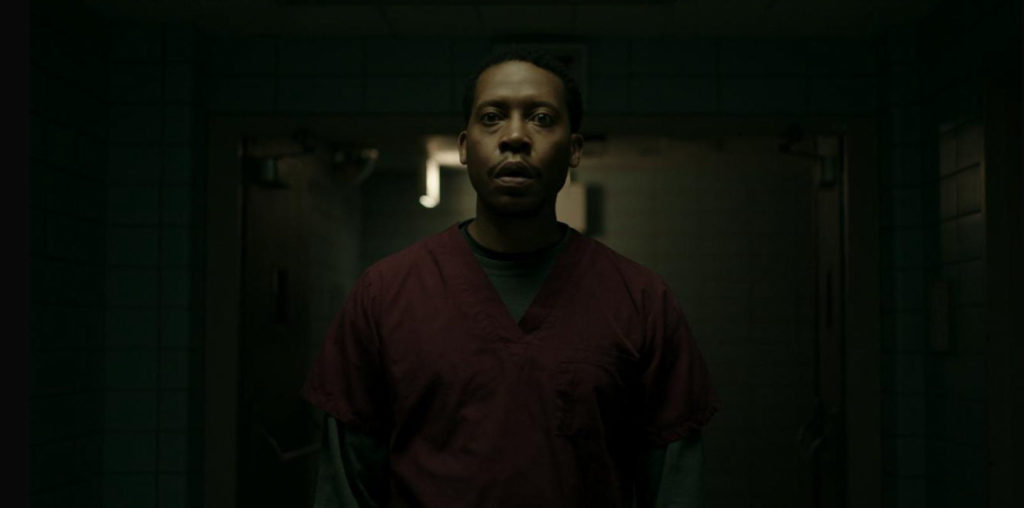
A pale man named Hunter is washed ashore near a blighted urban wasteland. Drifting in and out of consciousness and dreaming of pursuit and violence, he finds himself deposited in a darkened room in the throes of some kind of chemical withdrawal. On the other side of a thin damaged wall live Lisa and Joy, a derelict female couple who enjoy guns, shooting up, and television. After Lisa befriends Hunter and she asks him to find them some drugs and a new TV, he feels compelled to venture into the night. In the street, citizens are dying of a strange disease marked by spontaneous bleeding, and running away from “milkmen” in white uniforms who are herding them into white vans for transport to some gated industrial center. The entire scenario seems to be masterminded by the occupant of a white limo that cruises the streets looking for people to run over or otherwise harass.
When the limo passenger, a megalomaniac named Vincent, seeks out Hunter and addresses him in patronizing familial terms, Hunter is forced to try to make sense of the disjointed visions that are burned into his memory and come to terms with the truth about his past and his identity.
For all the bright color schemes favored by Vincent and his “milkmen” this remains a very dark movie in every sense of the word. For most of the film, our understanding of Hunter’s character and his relationship to the images that come to him in dreams are as murky as the water from which he emerges at the start. Director Patrick Gleason, who also portrays Hunter in the film, plays these details pretty close to the vest. Most of the questions we have about Hunter and Vincent are answered in the end, but the answers aren’t as interesting as the clues that are dropped. I like most of Gleason’s visual concepts, but some of the ideas that attempt to move the plot forward seem borrowed and underdeveloped. In particular, the supporting characters seem to have been airdropped in from some other gritty distopian thriller and don’t seem inspired to contribute to the scorched landscape that Gleason has effectively captured.
There’s the streetwise black guerilla who is fighting a grassroots war against Vincent’s influence. He appears early on, apparently as a shepherd to Hunter, but he actually has little to offer him. As written, Joy is a jaded dominant figure who is at once embittered and comforted by the status quo, and Lisa is the counterpart with Pandora tendencies, but both act more like bored college roommates.
Certain clues dropped via the visuals and the dialog do inspire us to consider the nature of Hunter’s world. Settings like the grisly human abattoir and the various shots of humans bleeding uncontrollably, as well as the discussions pertaining to the “river” that carries Hunter through time, firmly establish the filmmaker’s fatalistic approach. With such visceral provocation, Gleason’s Hunter manages to make the dark scenario somewhat engaging to the audience even if much of what is shown seems superfluous.
